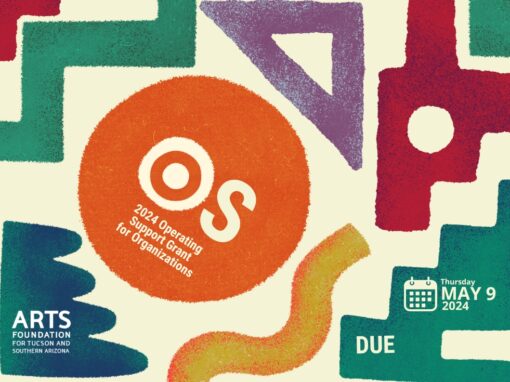From the desk of Jeff Da Costa, Public Art Manager of AFTSA
This month I’m excited to share with you and shed some light on the Public Art process here at the Arts Foundation for Tucson and Southern Arizona (AFTSA). I joined the Public Art department at AFTSA in May 2015 and serve the community through facilitating the 1% public art process for the City of Tucson and Pima County. I have been fortunate to do this while maintaining my own studio practice, which I’ve enjoyed for the past 2 decades.
I very much believe that public art is important because it is the visual language of our communities.
What is Public Art and how is it created?
As the Manager of public art for the 1% for Art programs for the City of Tucson and Pima County, I have overseen a variety of projects ranging from large scale sculptural installations perpetuating the ever advancing esthetics of the field to more intimate neighborhood murals commemorating the local history and knitting together people and place through a visual language.
The Arts Foundation has been managing the city and county 1% for public art process since the early ’80s (City) and early ’90s (County) and combines to over 350 artworks. The program mandates that any capital improvement construction budget allocate 1% to public art in the vicinity of the construction. The process we manage is centered around an open competitive Call to Artists, a geographically based community panel who selects the artist and then works with the artist to provide input on the artwork designed. This ensures that the community that ultimately funds the artwork through their taxes has agency in the artwork that is located in their neighborhoods and barrios.
Public Art during a pandemic
There are currently 25 active public art projects throughout the City and County with an average of 6 new projects starting and 3 completing annually. Because the 1% program is tied to capital improvements- and infrastructure is always in a state of redevelopment- the program is surprisingly durable. In the multi-decade lifetime of the program we have seen economic booms, recessions, bursting economic bubbles and of course now, a pandemic. Through it all the 1% program has endured, and the community should take significant heart in the robust collection that they have created and continue to steward. Despite these extraordinarily difficult times, public artworks not only speak to the culture from which they were created, they serve as an inspirational reminder of what we value and aspire to be.




